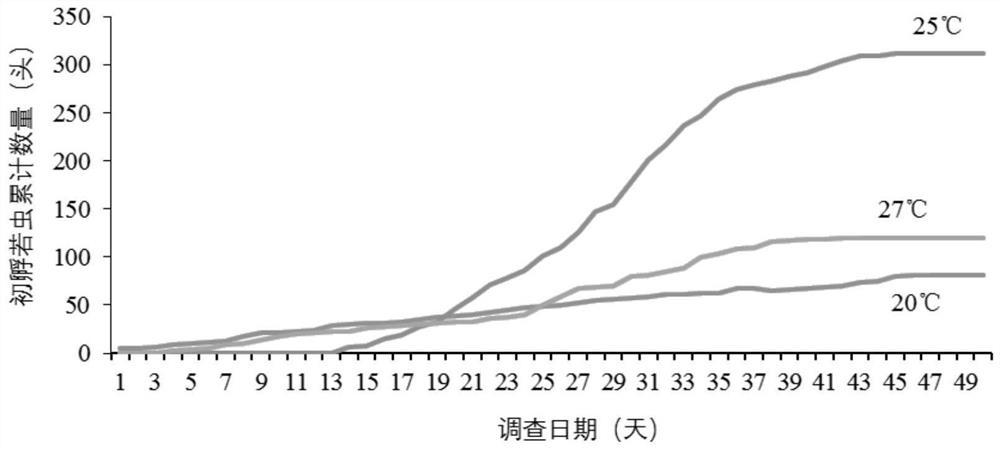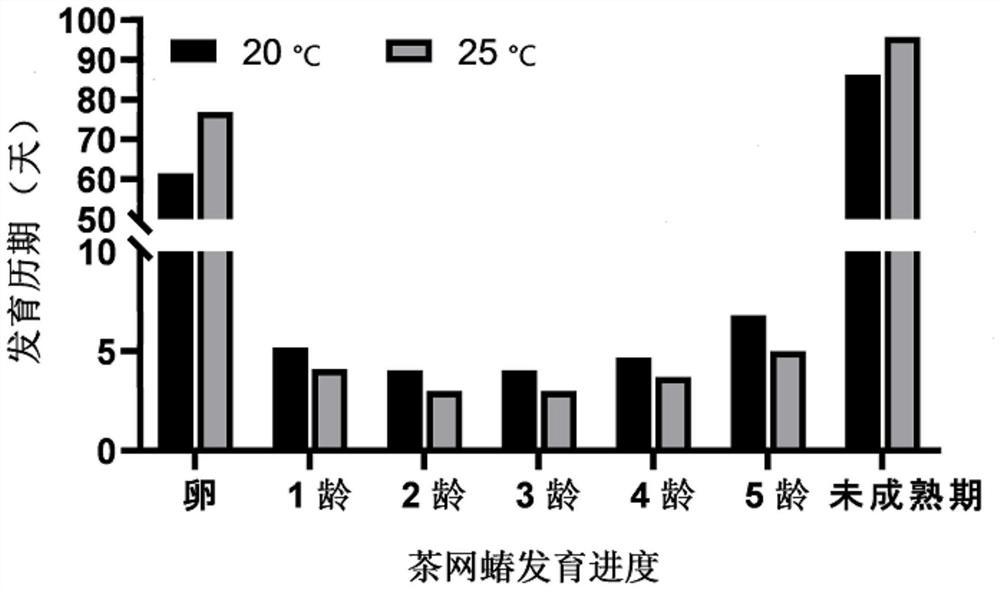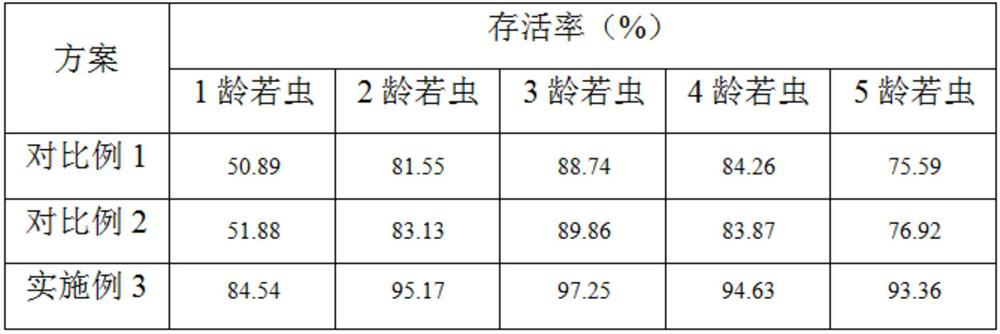Method for artificially breeding Stephanitis chinensis Drake
A technology of tea net bug and tea net bug nymph, which is applied in the direction of animal husbandry and the like, can solve the problems of few reproductive generations, low survival rate of adult worms, low hatching rate, etc. Effect
- Summary
- Abstract
- Description
- Claims
- Application Information
AI Technical Summary
Problems solved by technology
Method used
Image
Examples
Embodiment 1
[0030] A method for artificially cultivating tea net stinkbugs, characterized in that, the following steps are carried out:
[0031] (1) Feeding the first generation of adults
[0032] Collect tea tree branches with nymphs of the tea net bug, raise the nymphs on the branches to adults, select robust, equal amount of female and male adults of the tea net bug within one day of eclosion, place them in a petri dish, and raise the adults to the early stage of oviposition, Moist filter paper is covered in the petri dish, and tea branches containing leaves are placed to provide growth nutrients;
[0033] (2) Tea seedlings inoculated with worms and laid eggs
[0034] Get the adult of the early stage of laying eggs that step (1) raises and inoculate to the adult leaf of the bud of the 3-5 leaf under the bud of the branch of the living tea tree seedling planted by the root control device more than 3 years, 8 female adults on each leaf, 2 male adults, then cover the adult leaves with g...
Embodiment 2
[0043] A method for artificially cultivating tea net stinkbugs, characterized in that, the following steps are carried out:
[0044] (1) Feeding the first generation of adults
[0045] Collect tea tree branches with nymphs of the tea net bug, raise the nymphs on the branches to adults, select robust, equal amount of female and male adults of the tea net bug within one day of eclosion, place them in a petri dish, and raise the adults to the early stage of oviposition, Moist filter paper is covered in the petri dish, and tea branches containing leaves are placed to provide growth nutrients;
[0046] (2) Tea seedlings inoculated with worms and laid eggs
[0047] Get the adult of the early stage of laying eggs that step (1) raises and inoculate to the adult leaf of the bud of the 3-5 leaf under the bud of the branch of the living tea tree seedling planted by the root control device more than 3 years, 8 female adults on each leaf, 2 male adults, then cover the adult leaves with g...
Embodiment 3
[0056] A method for artificially cultivating tea net stinkbugs, characterized in that, the following steps are carried out:
[0057] (1) Feeding the first generation of adults
[0058] Collect tea tree branches with nymphs of the tea net bug, raise the nymphs on the branches to adults, select robust, equal amount of female and male adults of the tea net bug within one day of eclosion, place them in a petri dish, and raise the adults to the early stage of oviposition, Moist filter paper is covered in the petri dish, and tea branches containing leaves are placed to provide growth nutrients;
[0059] (2) Tea seedlings inoculated with worms and laid eggs
[0060] Get the adult of the pre-oviposition stage that step (1) raises and inoculate on the 3rd-5th adult leaf under the bud of the branch of the living tea tree seedling planted by the root control device for more than 3 years, 8 female adults and 8 male adults on each leaf. 2 adults, then cover the adult leaves with gauze ca...
PUM
 Login to View More
Login to View More Abstract
Description
Claims
Application Information
 Login to View More
Login to View More - R&D
- Intellectual Property
- Life Sciences
- Materials
- Tech Scout
- Unparalleled Data Quality
- Higher Quality Content
- 60% Fewer Hallucinations
Browse by: Latest US Patents, China's latest patents, Technical Efficacy Thesaurus, Application Domain, Technology Topic, Popular Technical Reports.
© 2025 PatSnap. All rights reserved.Legal|Privacy policy|Modern Slavery Act Transparency Statement|Sitemap|About US| Contact US: help@patsnap.com



